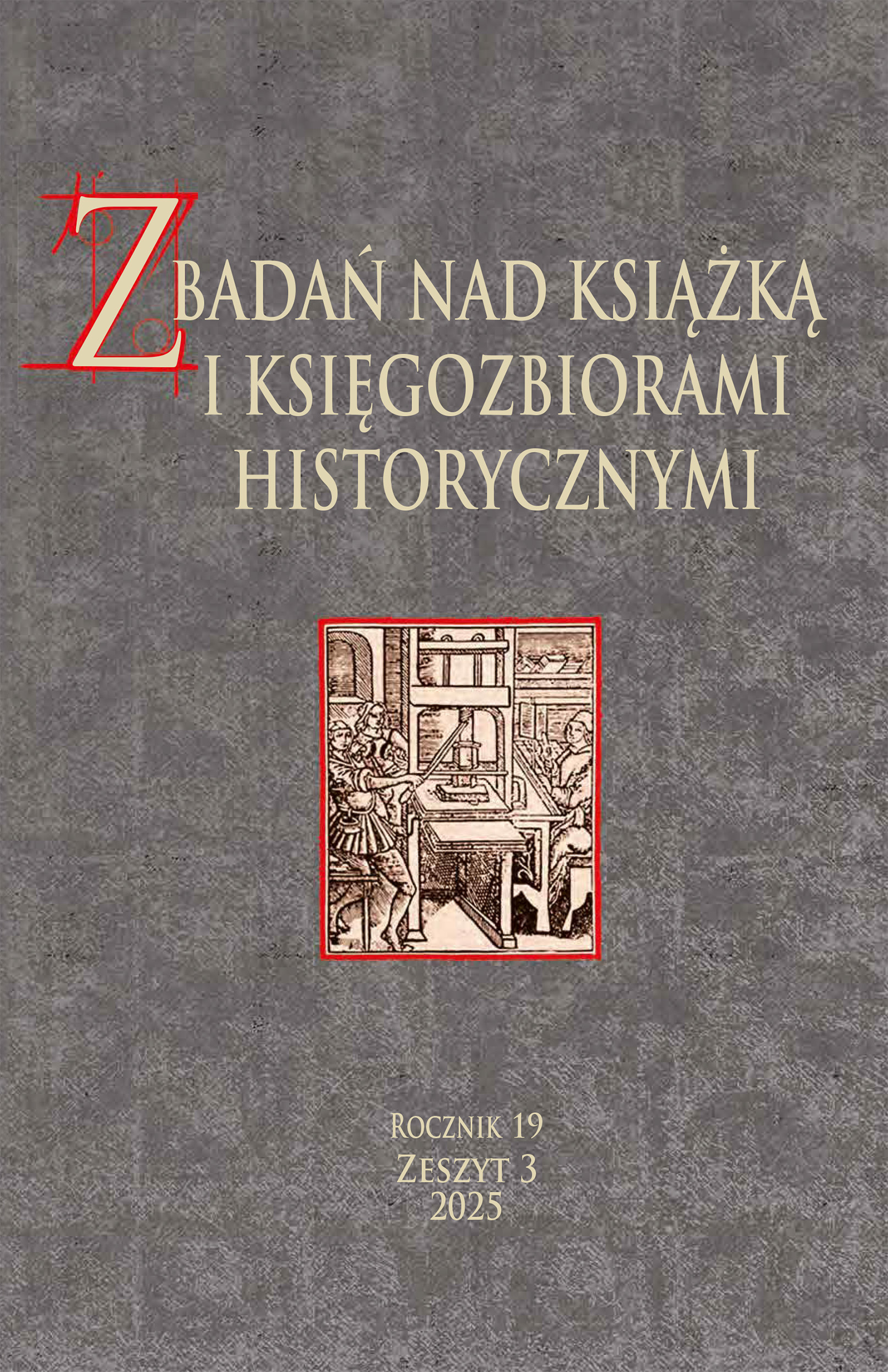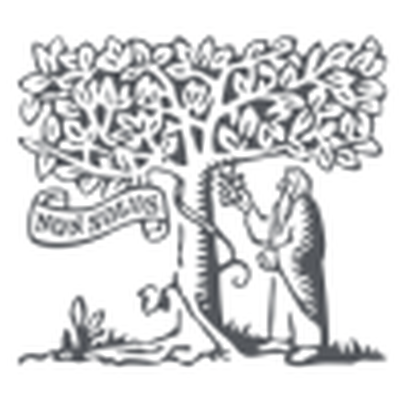On book lending in the Golden Age of Spain
DOI:
https://doi.org/10.33077/uw.25448730.zbkh.2020.644Keywords:
book lending and borrowing, private libraries, readers, book market, Spain, Golden Age.Abstract
One of the least investigated aspects of access to literature in sixteenth- and seventeenth-century Spain is the phenomenon of lending and renting books. This is a complex problem not only due to the necessity of co-occurrence of at least two sides of the procedure and the diversity of their motivation, but also the controversy of the act, around which fierce discussions were taking place then. Some of the humanists casted doubt on the purpose of collecting books in libraries if they were not being used to spread knowledge. At the same time, books, although they were still valuable goods, were no longer considered luxurious objects. The act of borrowing (and not paying for them) was seen as a diminution of their value, a testimony of bad reading, which in addition affected the activities of entities related to the book market. Some booksellers tried to adapt to that reality by offering the possibility of renting books for a fee. The documentation of the phenomenon that we have today is rather fragmentary, and the testaments of people who borrowed the book or awaited its return prove to be the richest source of information. In addition, an important source should be the literature of the period, which not only described the phenomenon of borrowing books, but also participated in discussions related to it.
References
• Alemán, M., Segunda parte de la vida de Guzmán de Alfarache, [online] http://www.cervantesvirtual.com/obra-visor/guzman-de-alfarache-segunda-parte--0/html/ff1a70ce-82b1-11df-acc7-002185ce6064_4.html#I_35_.
• Arce de Otálora, J., Coloquios de Palatino y Pinciano, T. I, Madrid 1995.
• Astete, G., Quarta parte de las Obras del Padre Gaspar Astete [...]: Del gouierno de la familia y estado de las viudas y donzellas, Burgos: en la imprenta de Philippe de Iunta, 1597.
• Bouza, F., Leer en palacio. De «aula gigantium» a museo de reyes sabios, [w:] M.L. López Vidriero, P. M. Cátedra (red.), El libro antiguo español III, Salamanca 1996, s. 29-42.
• Cátedra, P.M., Rojo, A., Bibliotecas y lecturas de mujeres. Siglo XVI, Madrid 2004.
• Cervantes y Saavedra, M. de, Przemyślny rycerz Don Kichot z Manczy cz. II, tłum. W. Charchalis, Poznań 2016, s. 76.
• Chartier, R., Inscrire et effacer. Culture écrite et littérature (XIe-XVIIIe siècle), Paris 2005.
• Coppens, Ch., Et amicorum: not just for friends, [w:] D. Sacré, J. Papy (red.), Syntagmatia: Essays on Neo-Latin Literature in Honour of Monique Mund-Dopchie and Gilbert Tournoy, Leuven 2009, s. 9-17
• Dadson, T., Libros, lectores y lecturas: estudios sobre bibliotecas particulares españolas del Siglo de Oro, Madrid 1998.
• Gelabert González, J. E., Lectura y escritura en una ciudad del siglo XVI: Santiago de Compostela, „Bulletin hispanique” 1982, n.84, s. 264-290.
• Griffin, C., The Crombergers of Seville, Oxford 1988.
• Hillgarth, J.N., Readers and Books in Majorca 1229-1550, Paris 1991.
• Infantes, V., Los libros "traydos y viejos y algunos rotos" que tuvo el Bachiller Fernando de Rojas, nombrado autor de la obra llamada Celestina, „Bulletin hispanique” 1998, t. 1, s. 7-51.
• Lucía Megías, J.M., Marín Pina, M.C., Lectores de libros de caballerías, [online] http://www.cervantesvirtual.com/obra-visor/lectores-de-libros-de-caballerias/html/c01b8049-29a5-49eb-b473-890ed55cbe14_2.html.
• Moll, J., El libro en el Siglo de Oro, „Edad de Oro” 1982, t. 1, s. 43-54.
• Páez de Ribera, R., Florisando, Sevilla: en casa de Juan Varela de Salamanca, 1526.
• Pettas, W., A Sixteenth-Century Spanish Bookstore: The Inventory of Juan de Junta, Philadelphia 1995.
• Rojo Vega, A., Libros y bibliotecas en Valladolid (1530-1660), „Bulletin hispanique” 1997, t. 99, s. 193-210.
• Ruiz, J., El libro de Buen Amor, [online] http://www.cervantesvirtual.com/obra-visor/el-libro-de-buen-amor--0/html/ff0ec418-82b1-11df-acc7-002185ce6064_34.html.
• Serrano y Sanz, M., Proemio, [w:] Hernando Colón, Historia del almirante don Cristóbal Colón, t.1, Madrid 1932, s. CI-CIII.
• Serrano y Sanz, M., Testamento de Gonzalo García de Santa María, „Boletín de la Real Academia Española” 1914, t. 1, s. 470-478.
• Trujillo Maza, M., La representación de la lectura femenina en el siglo XVI (praca doktorska), Universitat Autònoma de Barcelona 2009, [online] https://ddd.uab.cat/pub/tesis/2011/hdl_10803_4907/mctm1de1.pdf.
• Vázquez de Marmol, J., Papeles varios, escritos y recopilados por Juan Vazquez de Marmol (rkps), Biblioteca Nacional de España, sygn. MSS/9226.
• Zabaleta, J. de, El día de fiesta en Madrid y sucesos que en él pasan (red. E. Suárez Figaredo), „Lemir Literatura Española Medieval y Renacimiento” 2016, núm. 20, s. 145-344.
• Zayas y Sotomayor, M. de, Novelas amorosas y ejemplares (red. E. Suárez Figaredo), „Lemir Literatura Española Medieval y Renacimiento” 2012, n. 16, s. 354-568.
Downloads
Published
Issue
Section
License
Copyright (c) 2020 - fully remain with the author.

This work is licensed under a Creative Commons Attribution-NonCommercial 4.0 International License.






